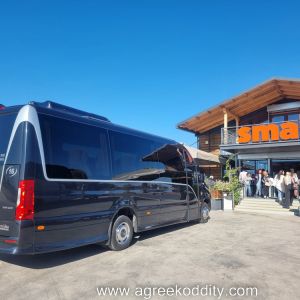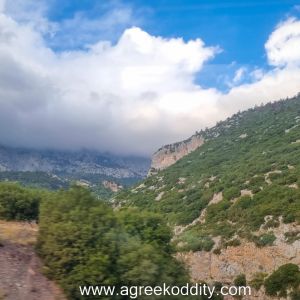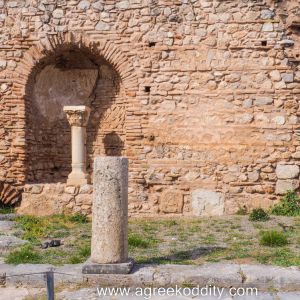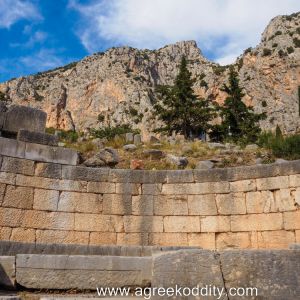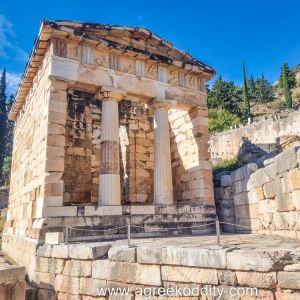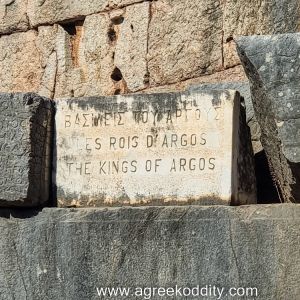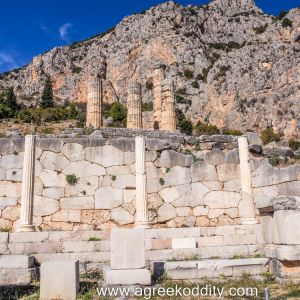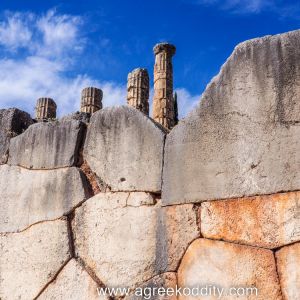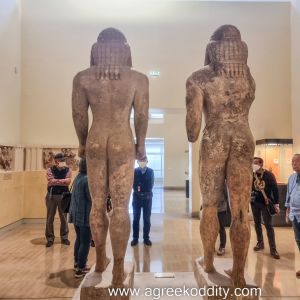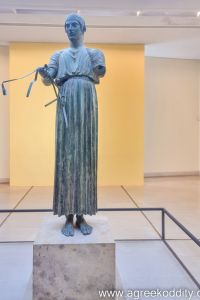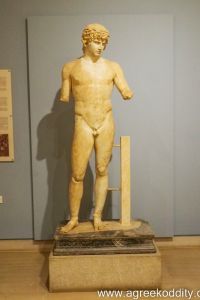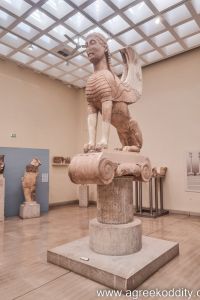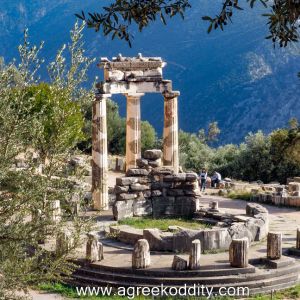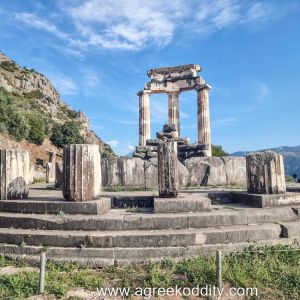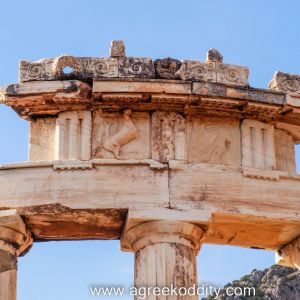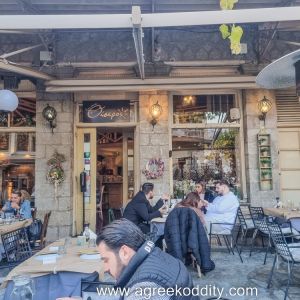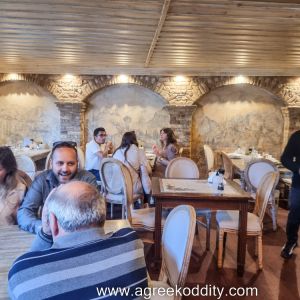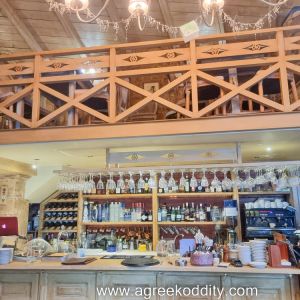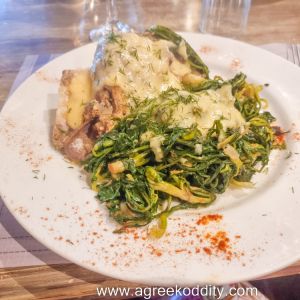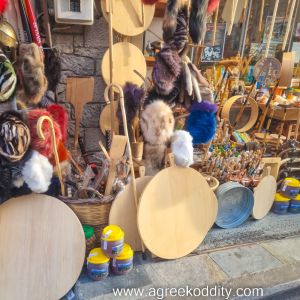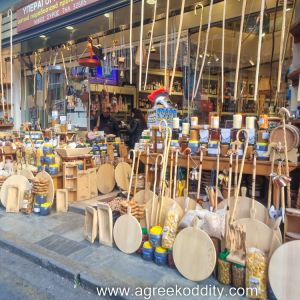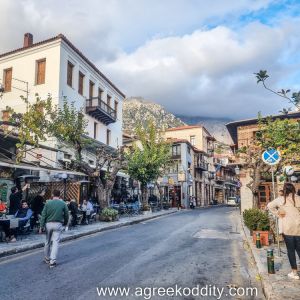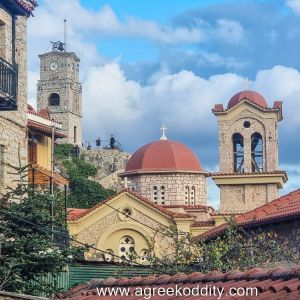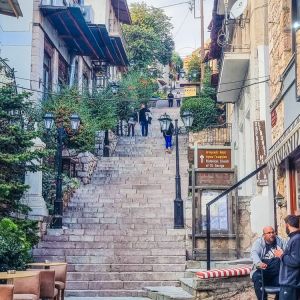Delphi and Arachova Tour from Athens
Delphi has so far managed to elude me. It is a relatively easy (though long) trip from Athens if you use a guided tour but Athens has always had a way of keeping me there with other distractions. Until now. Last night I booked the Delphi and Arachova tour through Get Your Guide. I’ve used this app in Bilbao and Tinos before and have always been satisfied with the tour providers that they use.
Delphi of course is one of most significant historical sites in Greece and the world. Much has been written about the Delphi and historical documentaries and travel programmes have brought this history to life. From Dr Michael Scott’s, Delphi the Bellybutton of the Ancient World to Joanna Lumley’s Greek Oddysey, homage has been paid Delphi.
As well as visiting Delphi I’m really excited to visit Arachova, a traditional mountain village set on the slopes of Mount Parnassos. Mainland Greece is something that I’ve only begun to explore in the latter part of my travels to Greece. I do get overwhelmed by the thought that there is so much of it and this Grandma is definitely well into the autumn of her life.
Anyhooo – that’s not something I wish to dwell on. The meeting point is at at Key Tours office which is a short walk from Acropolis Metro station. I don’t need to catch the metro though as it is in walking distance from my hotel. A mixed group of people have also booked themselves onto this tour – mixed in nationality and ages which I think always makes a good combination.
We are introduced to our guide and shown to the small bus. Once on board we exit the city and make our way West of Athens. The journey is several hours long but half way through we stop for a comfort break at a large cafe in Orchomenu called S Mall. There are several other coaches parked up and the queues for the facilities are long. I don’t bother with refreshments but stand outside taking in the surrounding landscape, just literally sucking every ounce of it up.
Back on the coach we begin to get further glimpses of the spectacular scenery and you can tell that we are in ski resort territory. Following the journey on Google Maps I notice that I have the town of Livadia ‘starred’. I ‘star’ points of interest on Google maps when I see or read something of interest. I don’t really remember why I starred it but suspect it was because of a travel programme or cooking show. As we approach the village our guide tells us that Livadia is known as a place that rears and sells the best meat in Greece – Ah maybe it was Rick Stein or similar. Livadia opened the first souvlaki shop here in 1951. In 2018 the town broke the Guinness book of Records for the longest souvlaki in world measuring 200 meters long.
Arriving at the archaeological site of Delphi, the looming mountains above us give a sense of our own insignificance. The landscape is breathtaking.
Starting at the Roman Agora, the 656 feet long Sacred way zigzags its way up towards the Temple of Apollo. Our guide tells us that anything terracotta is Roman. Along the Sacred Way votive monuments were erected by numerous cities by way of celebrating their military achievements such as the votives of Lysander, Marathon, Argos and Taratinias. All that remains of them now are the bases and plinths. These were magnificent monuments all set to establish their status amongst others – good examples of not only keeping up the with the Jones’s but outdoing them as much as possible. Other examples of this display of power and wealth are the several treasuries that were erected at Delphi, most notable of which is the Athenian Treasury. This was built around 500bc and displays square panels with bas-relief images of mythological heroes such Hercules and Theseus. What you see here on the Sacred Way is a replica of the treasury. The original is housed in the Delphi Archaeological Museum. Amongst all of these magnificent offerings is the Omphalos. A rather unassuming stone that marks the centre of the world – literally the naval of the world. According to Greek mythology anyway. (All explained in more details in the Dr Michael Scott video in this post)
I notice an inscription identifying the Alter of the Chiots. The alter was built in the 5th century BC by people from Chios and has an inscription that proclaims that the Chiots have access to the oracle before all others. It warms my heart to see this. Chios where I began my trip 7 weeks ago and now looking upon another part of its history in Delphi has almost brought me full circle.
On the approach to the Temple of Apollo, there is the Athenian Stoa which was built after Athens success in the Persian wars. The single aisled Stoa was made of eight fluted columns and was used to house the spoils of war and as an offering of thanks to Apollo. The polygonal wall that you can see at the back of the Stoa forms the base of the Temple of Apollo, the top of which you can just see above the wall. The interlocking shapes of the polygonal wall gives it stability and an early form of earthquake protection as befitting to this temple.
These offerings by powerful cities were of course to keep the God Apollo on their side. However, our guide also describes it as a “Speedy boarding card”. A way to jump the queue to speak to the oracle and determine what favours or bad luck Apollo was to bestow upon them. The oracle’s waiver of responsibility came in the form of a Delphic maxim inscribed in the wall of the forecourt in front of the Temple of Apollo. “Know thyself” was the first of three maxims, the other two being “Nothing to excess” and “Certainty brings ruin”. These words could have come from the mouth of my mother, or indeed the mouths of most wise women! The owness was always to fall upon the receiver of the information and interpretation could have gone in opposing directions. Does anyone else think of Joanna Lumley when thinking of the oracle speaking in tongues? (You’d have to have seen her Greek Oddysey travel show!)
Adjacent to the Athenian Treasury is the Sybil Rock, the place where the oracles was said to have made her proclamations. Most noticeable along the way is the Tripod of the Plataeans, or the replica of it. Originally the serpentine column had a golden tripod and couldron topped with the heads of three serpents. This votive was another offering from Athens for their victory over the Persians in the war of Plataea. What remains of the original is now in Sultanahmet Square in Turkey.
Continuing up to another level overlooking the Temple of Apollo you begin to get magnificent views over the Plaistos valley. Here you will also come to the Theatre of Delphi. Originally constructed in the 4th century BC, this theatre was built to accommodate up to 5000 people coming to watch theatrical and musical events. Sorry for the wobbly video!
If you have the energy (which I don’t) you can continue walking up to the Stadium where sporting events were held such as boxing, wrestling, running and chariot racing.
It is now time to come back together as a group and make our way to the Archaeological Museum. This is a large museum with 14 exhibition rooms over two floors – and there is a lot to see. Here are just a few of the important exhibits.
Cleobis and Biton are a pair of Kouros statues built as an offering from the people of Argos. (an interesting story if you’d care to Google it)
The Charioteer of Delphi and the Dancers of Delphi, the statue of Antinous and the Sphinx of Naxos all take centre stage. The briefest of descriptions for what is a truly magnificent museum with so many more treasures that I haven’t mentioned here.
At the end of the tour of the museum with our wonderful guide we are back on the bus and heading for the Temple of Athena Pronaia. The word ‘pronaia’ means in front of and suggests that Athena Goddess of wisdom and warfare was the protectorate of the Temple of Apollo dedicated to her half brother. The original temple was built in 7bc which was later destroyed by an earthquake. Another temple was rebuilt in 510bc.
Before heading back to Athens, we are going to Arachova for a meal. I’ve been looking forward to seeing this town immensely. However, we are running behind schedule and I don’t think we will have much time here unfortunately. We are dropped outside a taverna called Oistros by Aktida which comes highly recommended by our guide. I find a table with two other ladies from the group who have been lovely company on this trip. The food is fantastic but mine comes to the table a little late. As I start to eat the rest of the group are finishing. This shortens the time that I have to see the teeniest bit of Arachova. Sandy and I fly around the street snapping whatever we can before we have to board the bus back to Athens. Whirlwind to say the least. Arachova – I’ll be back!
Wow! What a day. If you’re ever in a dilemma over which guided tour to do put this at the top of your list. Our wonderful guide who’s name I’ve annoyingly forgotten was probably one of the best guides I’ve had the pleasure of being guided by. If I could change anything it would have been to have more time in Arachova but it is what it is.
Back in Athens I return to the hotel to pack. After that huge meal in Arachova I’m not hungry. That’s just as well because that evening Storm Eva makes her way over Athens and boy does she make her presence felt. The lightening strikes come every couple of seconds and the torrential rain turns the street down below into a river. As much as I’d love to get a better view of the lightening strikes over the Acropolis, standing on a metal balcony being pelted by the rain isn’t a good idea. I tell myself that the God’s are angry that I’m going home tomorrow. If I could stay I would.

